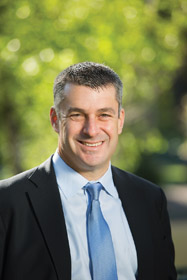Like its business counterpart, the factory model of education served a different time and a different economy.
 Controversial American business titan Henry Ford famously said, “People can have the Model T in any color, so long as it’s black.” That classic line signified what ultimately became a failure to respond to consumer needs and preferences. By the 1920s, Ford had lost a significant market share (and the paradigm) to General Motors, which was producing cars for many tastes. Today, successful businesses strive to serve “Markets of One,” where they mass customize their offerings to serve unique customer demands.
Controversial American business titan Henry Ford famously said, “People can have the Model T in any color, so long as it’s black.” That classic line signified what ultimately became a failure to respond to consumer needs and preferences. By the 1920s, Ford had lost a significant market share (and the paradigm) to General Motors, which was producing cars for many tastes. Today, successful businesses strive to serve “Markets of One,” where they mass customize their offerings to serve unique customer demands.
In days past, the prevalent paradigm for education was the little red schoolhouse where a lone teacher gathered students for daily lessons. That paradigm grew over the years into what could be described as the factory model of education. It’s the “sage on the stage” system that puts the all-knowing teacher at the center of a standardized learning experience to produce students able to achieve a passing grade point average.
Like its business counterpart, the factory model of education served a different time and a different economy, and was developed without the benefit of today’s research on what makes for optimal learning and teaching. These are complex processes shaped by individual interest, experience and abilities. Education made a half-step in the right direction in the move from teacher-focused methodologies to student-centered learning.
However, many of these student-centered approaches fall a half-step short of ideal, because they focus on achieving a standardized set of learning outcomes. It’s good that we’re attending to student learning rather than solely the interests of teachers. But in an era of standardized testing, classroom experiences too often look like the Model T.
Just as successful businesses learn to serve “Markets of One,” successful teachers have the knowledge and courage to transform education and create “Classrooms of One.” At Sonoma State University, we’re innovating with personalized education that focuses on individual student curiosities, capabilities and career needs. The programs of SSU’s Wine Business Institute are exemplars of this type of learning experience.
Executive MBA for the Wine Industry students create individual leadership development plans and evolve their own unique approach to management that’s tailored to their specific business opportunities and challenges. This isn’t a standard set of “seven practices of highly effective people,” or “21 irrefutable laws of leadership.” Rather, these are personal methods for making a difference in their organizations and communities, developed in a classroom of one.
In the coming year, SSU will significantly enrich its ability to serve students in the new Wine Spectator Learning Center. This education and industry hub will include a wine industry center for collaborations among faculty, wine business leaders and students. It will also have a student commons supporting the teamwork, co-curricular activities, and technology-enabled learning that are part of today’s comprehensive educational experience.
Most important, it will showcase not just three state-of-the art classrooms, but more than 1,000 classrooms of one to facilitate each of our students who are learning how make a difference locally and around the world.
Dr. William S. Silver is Dean of the School of Business and Economics (SBE) at Sonoma State University, and a dynamic voice in Higher Education with passions for leadership, business, and learning. He has inspired a shared vision for SBE as the educational nucleus of a thriving regional economy, with implications for the state, national, and global economies.



